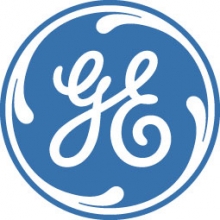Cleaning up: 2012 progress report on Australia’s readiness for a low-carbon future is an Economist Intelligence Unit report, commissioned by GE. The Economist Intelligence Unit (EIU) conducted the survey and interviews independently and wrote the report. The findings and views expressed here are those of the EIU alone.
Australia will begin pricing carbon in July 2012. The government announced the scheme more than a year ago, during which time corporations have had the opportunity to prepare for it. Do Australian corporations feel they are ready for a low-carbon economy? What actions have they taken to prepare for it? What are the biggest threats posed by Australia’s shift to a more sustainable model? Do corporations believe the current carbon pricing scheme is here to stay? And, crucially, have Australian firms identified opportunities for growth or alternative markets that are emerging or may emerge from a low-carbon economy? This report, based on a survey of over 130 senior executives in Australia, attempts to answer these questions.
The key findings of the research are as follows:
- Australian firms feel less prepared now than last year for a low-carbon future. Based on the overall findings from the Low-Carbon Readiness Barometer, Australian corporations today feel less ready for a low-carbon future than they did in January 2011, before the carbon pricing scheme was announced. Australia’s overall low-carbon readiness is 2.9 out of 5, down slightly from 3.1 last year (on a scale of 1 to 5, with 5 denoting excellent readiness).
- There are several reasons that may explain this change in sentiment. First, executives may have been overconfident before the carbon pricing scheme was announced and explained in detail. This year they have a much better grasp of their individual firms’ level of preparedness, and their sentiment has been tempered somewhat. Second, corporate nervousness on the eve of the introduction of the carbon pricing scheme is bound to be at its peak, as with any new piece of legislation. Third, with national business and consumer confidence down slightly this year, and given uncertain global and regional economic outlooks, corporations may be feeling more sceptical about any new costs—real and perceived—that they have to face.
- More Australian firms are taking action to prepare for carbon pricing, particularly those which will be directly affected by the carbon pricing scheme. Almost a third of Australian companies have modelled the impact of different carbon prices on their business operations, a three percentage point jump from last year (29%). Firms that will be directly affected by the carbon pricing scheme have made much more progress in improving their environmental performance, with two-thirds of them already modelling carbon’s impact. Still, that leaves a third which have yet to do so. Moreover, only 9% of companies which will be only indirectly affected by carbon pricing through higher costs have conducted such modelling. That said, more than two-thirds of firms surveyed have some sort of carbon-reduction strategy in place. The primary driver for developing this strategy is the need to comply with laws and regulations. Of the firms which will be directly affected by carbon pricing, some 85% have a carbon-reduction strategy in place, with a further 6% in the midst of developing one. More than half have developed broad strategies that encompass their external partners or supply chains, in addition to their own business. These findings indicate that Australia’s carbon pricing legislation has spurred firms to take action to reduce their carbon emissions. This will ultimately reduce the country’s overall carbon footprint. Policy clarity has given firms a much better understanding of the expected impact to their businesses, and this has allowed them to make informed investment decisions.
- Carbon pricing is here to stay, but perceived price uncertainty will be the biggest barrier to further progress on carbon reduction. Close to three-quarters of survey respondents believe that carbon pricing is here to stay, but almost half of them think that a new, better pricing regime will eventually replace the current proposed scheme (of a fixed price followed by emissions trading from 2015). This is partly due to dissatisfaction with the current carbon price. Close to two-thirds of respondents believe that the A$23 per tonne starting price is too high. Still, there are a few others in favour of a higher price: almost 10% of survey respondents feel the A$23 per tonne starting price is too low. And a plurality of respondents (38%) considers uncertainty about the future price of carbon as the primary barrier to making further progress on carbon reduction in their companies. This uncertainty may not be resolved quickly. Even in the EU, which began trading carbon emissions in 2005, there is still a lot of debate about what the optimal price should be. It is likely that Australia, which is just about to take its very first steps towards carbon pricing, will have to go through several years of discussion and trading before reaching equilibrium. More concrete action depends on greater certainty about the costs carbon pricing will impose.
- The corporate carbon agenda has shifted towards cost reduction. While respondents last year sniffed opportunities in “Developing new products and services” (47%) and “Improving relationships with customers” (47%), this year “Cost reduction” has risen to the fore. This perhaps reflects an increasing certainty about the added costs, particularly among companies directly affected by the scheme. Any potential new opportunities, however, remain relatively unexplored. Unsurprisingly, firms that will be directly affected by the carbon pricing scheme have made more progress on this score. In particular, more than half of this group has set up dedicated roles or teams to identify greater carbon or energy efficiency measures internally. Around 30% of them have also recruited a government lobbyist, or hired an external consultant to help identify opportunities. This reflects these firms’ willingness to engage third-party help as part of a broad stakeholder engagement strategy. Meanwhile, reflecting the current anxiety about carbon pricing, only a third of respondents believe that the opportunities created by imposing a carbon price will outweigh the risks in the long term. This is down from about one-half last year.







